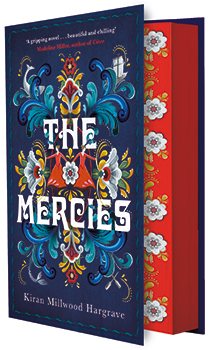

By breaking with these traditions, the town’s remaining citizens (almost entirely women and children) survive, but as the years pass the dangers of trespassing gender roles build, divide the town, and threaten to destroy lives. Some women naturally arise as leaders while others mourn not only their men, but also their lost traditions that strictly separated the work of men and women. Following the loss of their men to the storm, the women of Vardø break with gender norms in order to survive following the death of nearly all their town’s men. The novel opens with Maren, a Finnmark native, on the day of the great storm.

In the pages that follow she weaves two women’s stories together and The Mercies builds toward Vardø’s brutal witch trials of 1621. A devastating storm on Christmas Eve of 1617 killed nearly all of the town’s men Hargrave begins her novel on that day. The Mercies fictionalizes historical events. Set predominately in the far northern town of Vardø, in Finnmark, Norway from 1617-1621, this is a novel punctuated by the harshness of both the natural world and human viciousness. Way back in February (a mere two months that feels like two years ago thanks to covid-19), I read Kiran Millwood Hargrave’s novel, The Mercies (2020).


 0 kommentar(er)
0 kommentar(er)
